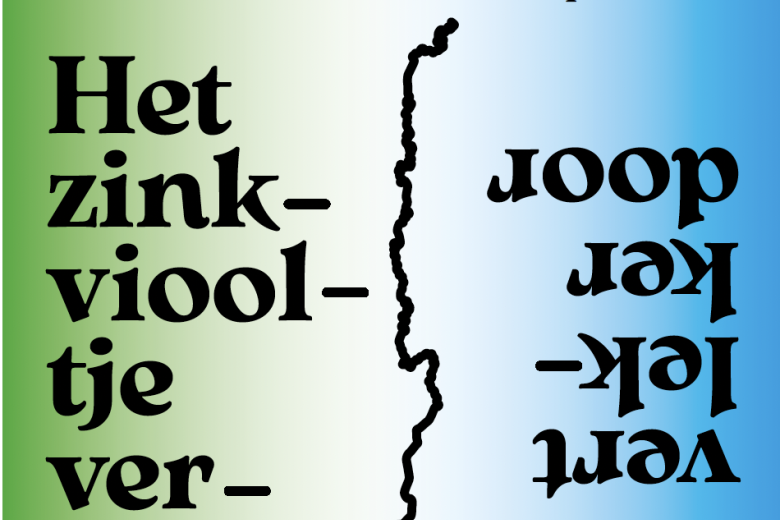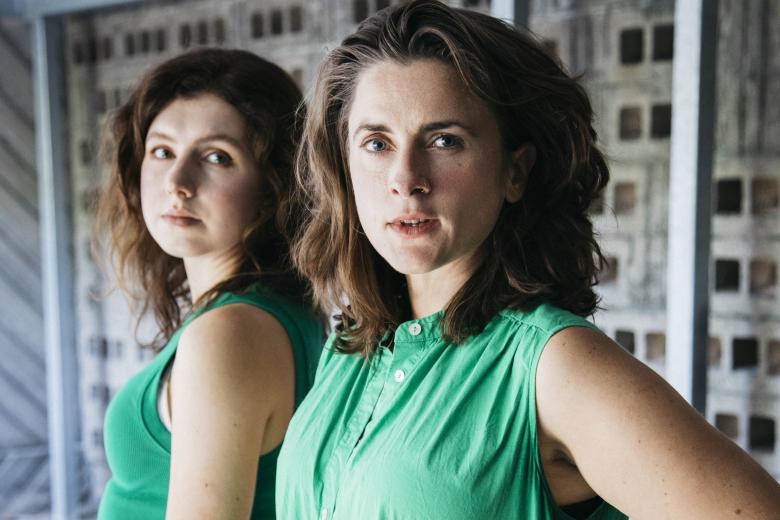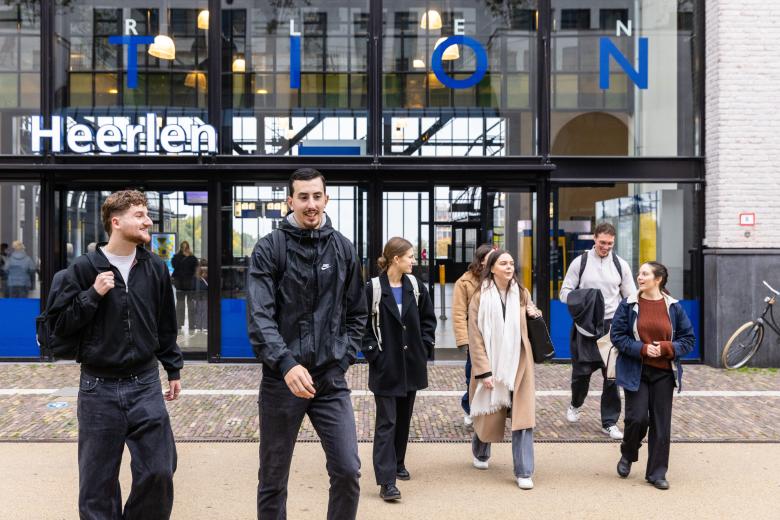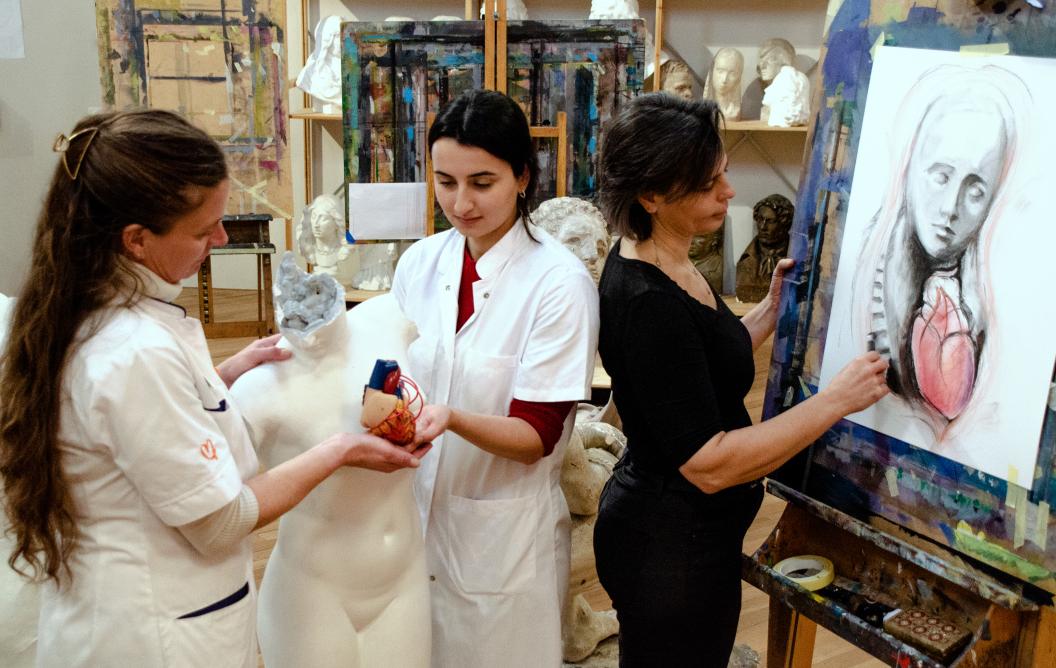Innovative research at the intersection of art and science
This summer, the HeArt Ma’at racing crew ran Maastrichts Mooiste, the city’s largest annual running event. Their goal was to raise money for research into an art therapy for heart patients. Dozens of crowdfunding initiatives and hundreds of donations later, they managed to raise more than €55,000 for this special project at the intersection of art and science.
Every year, roughly 15,000 people in the Netherlands suffer a sudden cardiac arrest. Some will have an ICD (implantable cardioverter defibrillator) inserted. This can prevent sudden cardiac death by administrating a shock, but may also cause psychological distress. “Imagine waking up in the hospital and being told not only that you had to be resuscitated and will receive all sorts of medications, but also that you need an operation to receive an ICD. It’s a drastic change; 33% of patients experience psychological symptoms such as anxiety and stress afterwards, which can in turn increase the risk of new cardiac arrhythmias. It’s important that they receive the appropriate aftercare,” says Yesim Kaya, a physician–researcher at CARIM, UM’s cardiovascular research institute. Last year, Kaya was awarded an HS-BAFTA grant to study integrated cardiac imaging in the treatment of patients with ventricular tachycardia: life-threatening arrhythmias of the heart.
Kaya’s fascination with the heart is not limited to her work within the hospital walls; she has devoted her life to it. She is an instructor at the Red Cross and the Dutch Resuscitation Council. Additionally, she gives free CPR lessons, and will soon also offer cardiovascular risk prevention classes through the charity Hart voor een Ander. “I’ve always been intrigued by the prevention and treatment of ventricular tachycardia, but patient aftercare is also very important to me. That’s why I decided to get involved with HeArt Ma’at.”
Art for the heart
Kaya joined the multifaceted project, initiated by cardiologist Rachel ter Bekke and artist Claudia Volders, a few years ago. Dozens of patients have already been introduced to HeArt Ma’at, mainly by getting creative in pop-up studios. “We’re currently working on a large canvas and leaflets for the waiting room of the cardiology department. The canvas is covered in drawings that portray the emotional experience of wearing an ICD, while the leaflet tells the personal stories of patients [‘Humans of HeArt’].”
In Egyptian mythology, ma’at refers to balance and stability. In the HeArt Ma’at project, it symbolises finding an equilibrium in life. “After an ICD is placed, which is quite a drastic intervention, patients often experience strong emotions. They need tools and techniques to process what is happening and to pick up the thread of their lives again. But expressing your feelings in words isn’t always easy; that’s where art comes in. We want to study how we can guide patients in their coping process through personalised art therapy. The next step is to build a strong scientific basis on which to develop therapies and a care pathway.”
Text continues below the photo.
Hard work makes dreams come true
To support the study, a crowdfunding campaign was launched under the auspices of the annual fund campaign of the University Fund Limburg. Through the UM Crowd platform, the ‘dream team,’* as Kaya puts it, raised more than €30,000. CARIM doubled the target amount of €25,000, bringing the total to an impressive €55,000. “We put a lot of time and effort into the crowdfunding; it’s not like the money just flows in. But you also get a lot in return: not only in terms of donations but also valuable contacts, unique opportunities and visibility.”
The project dovetailed seamlessly with UM Crowd’s goal of bringing people together around an important societal theme, with the ultimate aim of advancing science. “My aim was €30,000; the fact that we raised the money through crowdfunding makes it extra special. Colleagues, family, friends, patients and local businesses all supported us by making a donation or participating in one of the initiatives. Like us, they really believe in what we do, which is a very special feeling.”
Wonderful things can happen at the intersection of art and science.
Yesim KayaUnique combination of art and science
“For me, what makes HeArt Ma’at unique is its combination of art and science. It does patients good to be creative—but for doctors and researchers, too, it’s important to tune in to our creativity. If you look at the most brilliant scientists in history, they were usually highly artistic people. Of course, in the medical world we have to follow protocols and guidelines, but it’s also important to tap into our artistic side, think outside the box and occasionally take a completely different approach. Wonderful things can happen at the intersection of art and science.”
*Besides Kaya, the team includes cardiologist-electrophysiologist Rachel ter Bekke, professor of Clinical Psychology Susan van Hooren, hospital psychiatrist Carsten Leue, illustrator Emmy Mevissen, professor of Mathematics of Knowledge Engineering Ralf Peeters, artist Claudia Volders and professor of Genetic Cardiology Paul Volders.
Text: Anouk van den Brink
Photography: Emmy Mevissen
Also read
-
Veldkrant Geuldal
We are happy to share the publication of the Veldkrant Geuldal. Over beheertwijfel in een veranderend landschap. The veldkrant was written by Claartje Rasterhoff and Christian Ernsten, in collaboration with Erik Wong and Thijs de Zeeuw, and published by MACCH in October 2025.

-
Can Europe resist the digital oligarchy?
Are EU citizens essentially the serfs of a handful of American monopolies? Here, Maastricht University researchers Valentina Golunova and Dani Shanley discuss the geopolitical and institutional consequences of the new ‘digital oligarchy.’ Why do its leaders—paradoxically—still need our consent for...

-
Promenade I in Heerlen preferred location for Maastricht University, further exploration to follow
After careful consideration, Promenade I has emerged as the clear preferred location for the establishment of Maastricht University (UM) in Heerlen. In the coming period, the municipality of Heerlen and UM will jointly investigate the feasibility of this step, which should be accompanied by a...

